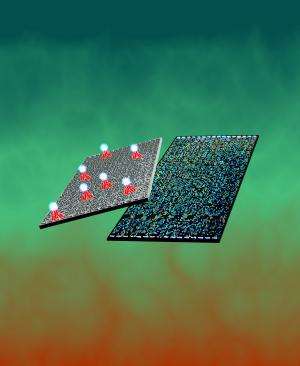New technology shows promise in taking the guesswork out of vaccine development

Scientists from the Center for Innovations in Medicine in the Biodesign Institute at Arizona State University have developed a comprehensive, microchip-based technology, called immunosignature diagnosis, which can rapidly and comprehensively measure an individual's vaccine response, promising to take much of the initial guesswork out of predicting effective vaccines.
Professor Stephen Albert Johnston and Joseph Barten Legutki, used a mouse model of influenza infection to determine how the immunosignature of a natural infection can be used to discriminate between a protective and non-protective vaccine. The study appears in the October 28 early online edition of the Proceedings of the National Academy of Sciences.
Johnston is driven by the quest to develop disruptive technology that could make health care more effective and affordable. Despite 17 percent of the U.S. GDP tied to health care costs and growing, the U.S. does not get as much value per dollar as other countries (spending the most per capita yet ranking last in efficiency). He believes innovative diagnostic technologies that could determine whether or not an individual would get sick before symptoms appear, as well as the early identification of microbial culprits of infections has high potential for transforming medicine.
"We developed the immunosignature technology primarily for early detection of disease, but realized it may have other applications," said Johnston, who directs the Center for Innovations and Medicine at the Biodesign Institute "In this work we demonstrate that it may also be useful for screening candidate vaccines."
Currently, the effectiveness of vaccines is evaluated by looking for the presence a particular type of antibody from the vaccine-generated immune response or by extensive and complicated sets of analyses. The power of the immunosignature is that this effectiveness can be completed in one fell swoop, by using thousands of random molecules aligned on a microscope slide, like the transistors on a computer chip.
"We use an array of 10,000 short peptides, each one about twenty amino acids long, to generate a high degree of specificity and sensitivity for measuring both human, dog, and mouse infections and chronic and genetic diseases," said Legutki, a faculty in CIM and lead author of the paper. "A subset of these peptides will stand out, based on an individual's antibody repertoire, and provide a unique pattern, or signature for a given disease."
In the study, they used a mouse H1N1 flu model system. This included both seasonal forms of influenza or inactive control, as well as several commercially available vaccines that could provide full or partial protection, and asked whether or not the immunosignature could predict vaccine effectiveness. They also examined individual differences among those receiving the same vaccine, and whether the immunosignature profile could have the power to reveal what parts of influenza virus were doing the most harm.
They found that the live and inactive forms of the virus produced different immunosignatures, with different intensities of immune response, yet both contained a core immunosignature of the virus. Also, the immunosignatures were unique between closely-related commercial vaccines, showing that immunosignatures were sensitive enough to detect subtle differences between vaccine formulations. Furthermore, based on the immunosignature, they could determine the degree of protection based on the vaccine formulation to successfully predict the outcome of the flu challenge.
Finally, they could also use the immunosignature information to trace all the way back to the virus, and figure out which portions of the virus could be used as the basis to build the most protective vaccines.
"These results are indicative of the value and breadth of information that can be performed by an immunosignature, and may significantly reduce the costs and timeframes currently committed to vaccine testing," said Johnston. "By using just a single, simple platform, we are able to identify effective vaccines."
Johnston hopes that immunosignatures will become a valuable new tool for public health response to pandemic disease. "As the recent swine H1N1 pandemic demonstrated, new vaccines are always needed to handle emerging infectious diseases. We hope this will be an important technology that could be well-suited to try to stay one step ahead of these harmful bugs."
More information: Immunosignatures can predict vaccine efficacy, www.pnas.org/cgi/doi/10.1073/pnas.1309390110



















